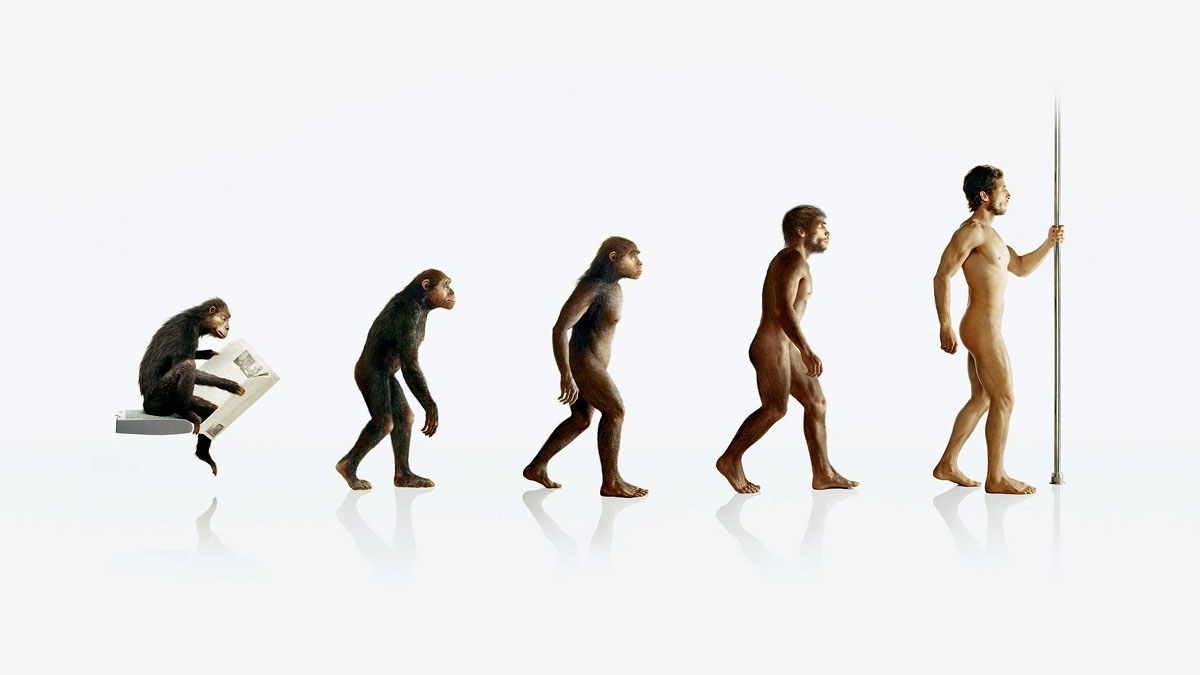is evolution a repeatable science?

Most people familiar with the Wedge Document created for the Discovery Institute at its inception, know that it’s a battle plan for advancing creationism in science classes through a tactic called “teaching the controversy.” Creationists portray evolution as a hotly debated topic within the scientific community and insist that intelligent design provides an equally scientific alternative. Another, less used tactic is declaring that evolution isn’t a scientific theory but a circular argument preached with the zeal of a religion. Evolution, they say, isn’t repeatable under laboratory conditions and if it’s not repeatable, it’s not science.
Oh the irony! The biggest charge levied against creationism by scientists is that a designer or a deity isn’t repeatable in a lab and is subjectively defined, therefore creationism isn’t science. If this isn’t a textbook case of mental projection on the part of the creationists, I don’t know what is. Why? Because if we use the proper principles of evolution rather than the quasi-Lamarckian fallacy presented by creationists in their lengthy and passionate denials, we can put every one of the mechanisms vital for evolution to take place to the test in an objective, repeatable form, starting with mutations and ending with natural selection and speciation.
Mutations are supposed to be random changes of the genetic code which happen when a DNA strand is replicated. When we don a white coat and test how accurately DNA is replicated, we’ll see that on average, every 100,000 base pairs or so, there’s some sort of error. Base pairs are missing, doubled up or the wrong base pairs are copied. We can take any organism with DNA, study its genome before and after replication, note all the errors and do it again and again. As it continues to replicate, we’ll see that the mutations change from replication to replication and there doesn’t seem to be an order in which the mutations take place. Hence, random mutations are repeatable under laboratory condition and are hence, science.
But hold on, what about whole limbs and different body parts? Ah, that’s where the lab reigns supreme because we can not only observe the biology at work, we can control it. By simulating signals from Hox genes and artificially duplicating active areas of stem cell development in any embryo, we can create new pairs of arms and legs, even chimeras and conjoined twins. We can see it just happen in a small percentage of cases and we can replicate what we see in a normal embryo with the same result. It’s not just repeatable science, it’s a bona fide experiment with every trapping of the scientific method to it. What do you think scientists do with fruit flies in a darkened laboratory, hunched over their tiny eggs? They conduct experiments on Hox genes and genetic toolkits that control the organism’s development and body plan.
Next we can tackle natural selection. We can catalogue animals in a given population and their genetic makeup. Then over generations, we know how many survived, how many died and how many got the chance to pass on their genes. A few dozen generations later, we can take a DNA sample from the resultant population and compare it to the original samples taken at the start of the experiment. What we’ll notice is a genetic drift towards the genomes of the survivors in the original population. We can see this in fruit flies, humans, birds and just about any animal we’ve studied extensively. Once again, it’s repeatable, testable science.
Finally, we can take on the biggest test of evolution, speciation. How do we prove that a species can split into two different, non-interbreeding populations? Easy. Just repeat the experiment to tack natural selection and genetic drift but split your original population and put the halves in different environments. Different animals survive in different conditions and over a very long stretch of time, you can track the cumulative differences. A big enough difference makes them two different species and over time, they will drift so far apart from each other, producing any sort of hybrids would be impossible. Take grizzlies and polar bears for example. The two don’t like each other and mate so rarely, only one polar/grizzly hybrid is known to exist and the few rumored to be out there are just Arctic tales told over a campfire. But they started out as one species, proven by the fact that they can hybridize. We see it nature, we know how to replicate it with an experiment. Bottom line, it’s testable, repeatable science.
In creationist circles, there’s an overwhelming desire to call evolution a religion because that’s how they view it. To them, science is the gospel of atheism designed to undermine their belief system in favor of another. This is why they approach it the way religious zealots deal with any competing faith. Just like they believe that their religion holds truths and is repeatable because hundreds of millions of people think the same way, they disregard the actual science behind a complex theory and use the old religious rallying cry of my-truth-is-truer-than-your-truth. But even more perplexing and alarming is the fact that because evolution isn’t aligned with a book they consider sacred, it must be wrong. How much of their faith comes from a book and how much of it comes from the heart? Even the Bible advises us to believe with our hearts but seek the truth with our eyes. Denying the repeatable nature of evolution isn’t seeking the truth with one’s eyes. It’s closing one’s eyes to a small part of a truth we’re just beginning to unravel.





